Potential product underwent commercial trials at three shrimp farms
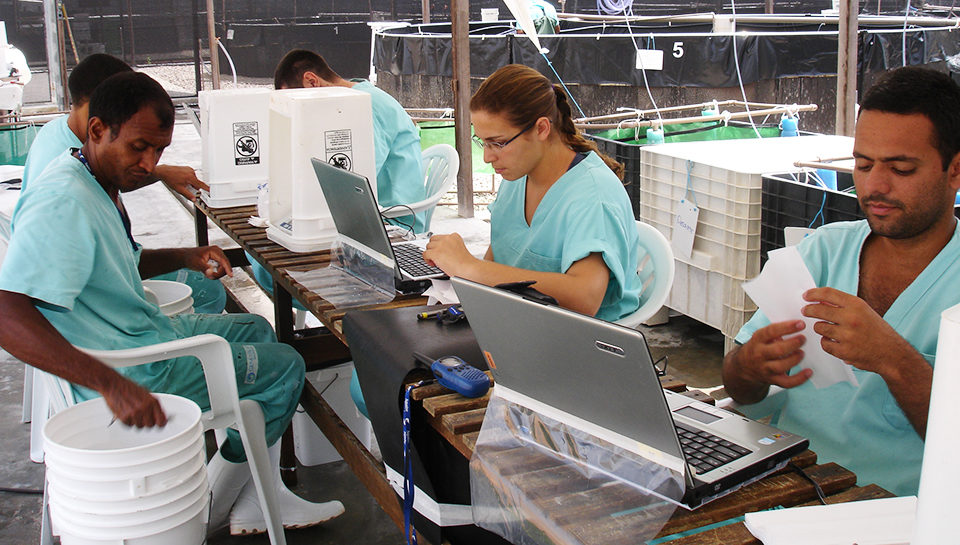
Genearch Aquacultura, a new shrimp genetics company in Brazil, and Aquatec, the country’s leading commercial hatchery, have been working for several years to develop local specific pathogen-free (SPF) lines of shrimp.
Given the generally poor pond results obtained with the first generation of KY30 and KY40, two non-locally adapted SPF lines, and their crosses, the authors more recently sought to evaluate the hybrid vigor that might result from crosses between the imported SPF lines and the non-SPF, genetically improved and locally adapted Speed Line. Hybrid crosses between the SPF lines and the Speed Line were designated SPKY30 and SPKY40.
Test design, analysis
Multiple spawns from each of the five shrimp lines were reared under normal larviculture protocols. Performance tests then involved two concurrent experiments. The first used five side-by-side 1,000-square-meter experimental ponds, each stocked with 50,000, 11- to 13-day-old postlarvae from only one line at 50 shrimp per square meter. Stocking, feeding and routine pond management followed standard commercial procedures for the region. The tests targeted an average harvest weight of 12-13 g from a grow-out cycle of about 80 days.
The second experiment involved animals that reached 2 to 3 grams in the above ponds. About 750 animals from each line were tagged with elastomers and stocked into each of the other ponds at a rate of 150 animals/line/pond. A total of 750 tagged animals from all five lines were placed in each pond. The grow-out time for the tagged animals was about 50 days and also targeted animals of 12 to 13 grams.
An overnight power failure that caused a drastic drop in oxygen levels and significant mortalities led to shortening of the test period and earlier pond harvests. All dead animals were collected, counted, weighed and identified by their tags. The five ponds were harvested in the next few days, which provided the opportunity to evaluate animals for their tolerance to low oxygen levels.
The presence of tagged animals from all lines in all five ponds allowed the quantification of the environmental effects for each pond and the ability to correct for them within a statistical framework. Analyses were first conducted separately for each experimental testing block for non-tagged and tagged animals, and subsequently a global statistical analysis was performed.
A third set of tests to confirm the results from the studies above followed similar experimental design and statistical approaches in the winter of 2008. After excellent pond results were obtained for the SPKY40 hybrid, this potential commercial product underwent commercial trials in 26 ponds at three local shrimp farms.
Significant results
Nearly all statistical effects tested were highly significant (P < .0001). Stocking weight was highly correlated with low oxygen mortality, indicating that animals which started the test at higher weights were more susceptible to low oxygen stress. Analyses conducted for each experiment with tagged and untagged animals revealed fairly similar results, with a few exceptions due to some pond effects that were statistically corrected. Hence, Figs. 1-4 show results for the different traits evaluated under the global statistical analysis framework. To facilitate interpretation, the lines are arranged by decreasing magnitude of their harvest biomass yield effects.
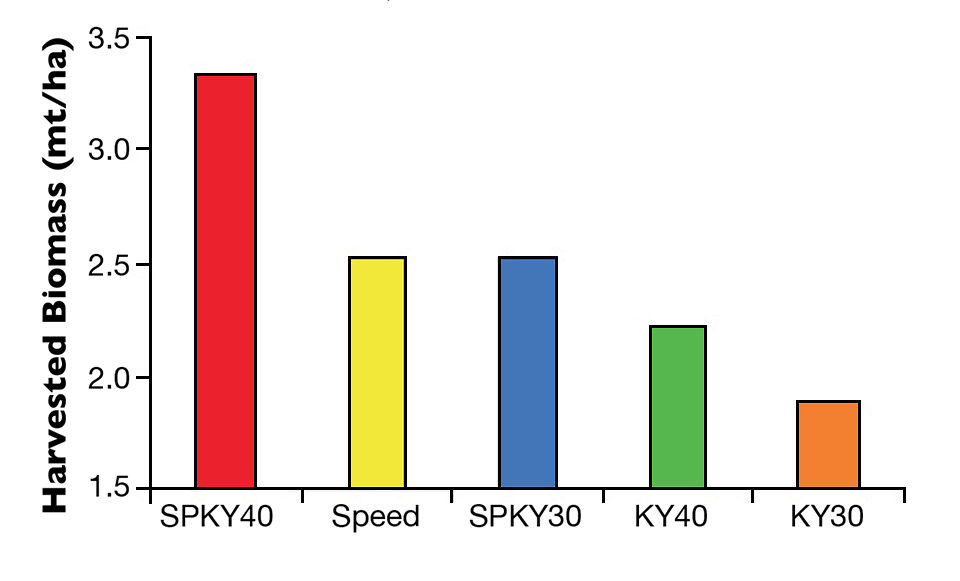
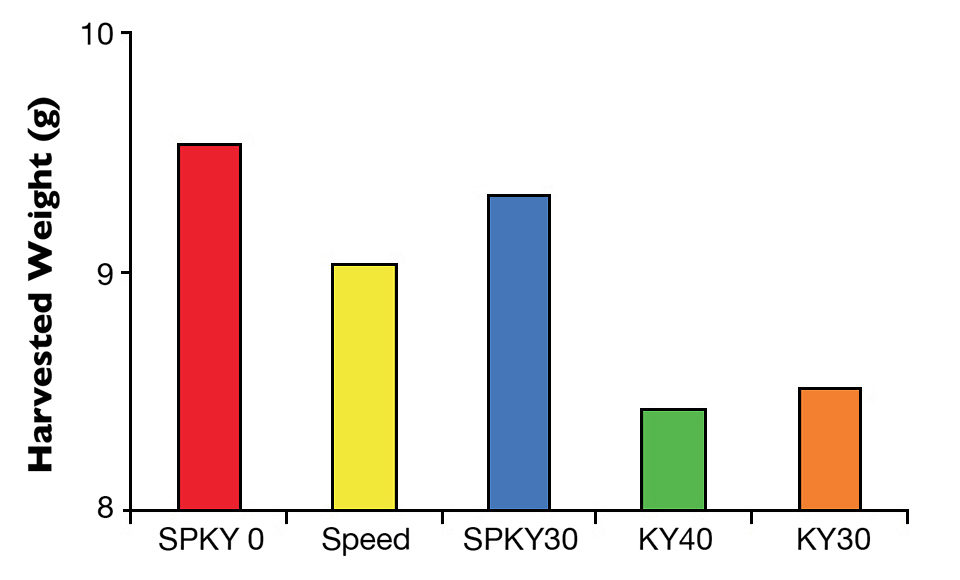
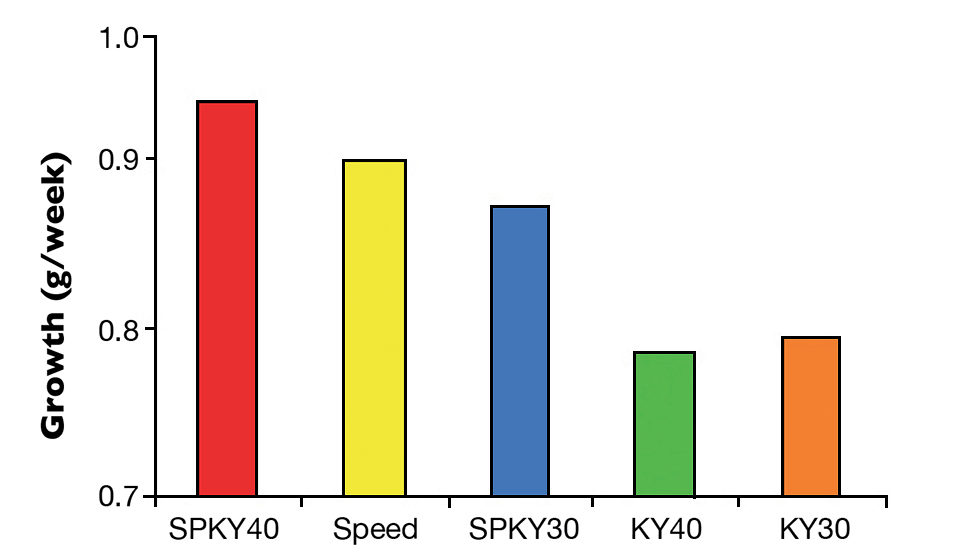
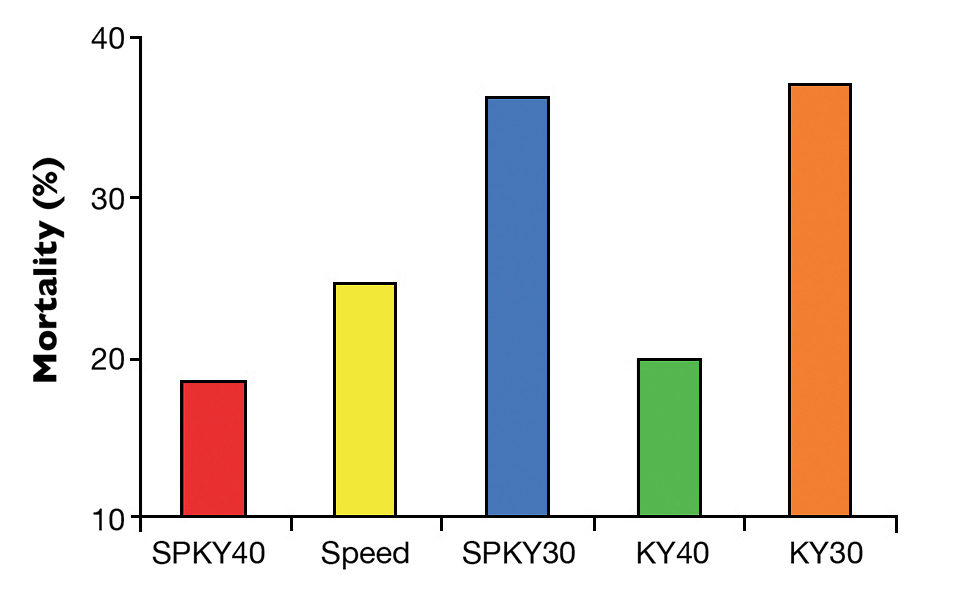
The figures show the performance advantage of the hybrid cross SPKY40 (Speed Line x SPFKY40) for all traits evaluated, with a harvest biomass advantage over the Speed Line of over 800 kg/ha and notable low-oxygen stress tolerance. This was the first time a line superior to the genetically improved and locally adapted Speed Line was identified. The “second place” ratings of the Speed Line showed the results of many years of genetic improvement work.
The hybrid crosses SPKY40 and SPKY30 clearly performed better than the two SPF “purebred” parents and even the two parents in the case of SPKY40, suggesting a potential for further exploration of hybrid vigor. Also, as shown in Figure 1, the two nonlocal SPF lines had lower pond performance.
At about 70 percent, pond survival was highest for SPKY40, followed by 55 percent survival for the Speed Line, 53 percent for SPKY30, 52 percent for KY40 and 43 percent for KY30. As shown in Figure 4, low-oxygen stress caused high mortality rates for both the KY30 line and its derived hybrid cross, indicating they may be very susceptible to stresses present in commercial production settings. However, the tolerance to low oxygen shown by KY40 was remarkable for a nonlocal line never subjected to genetic improvement in the country.
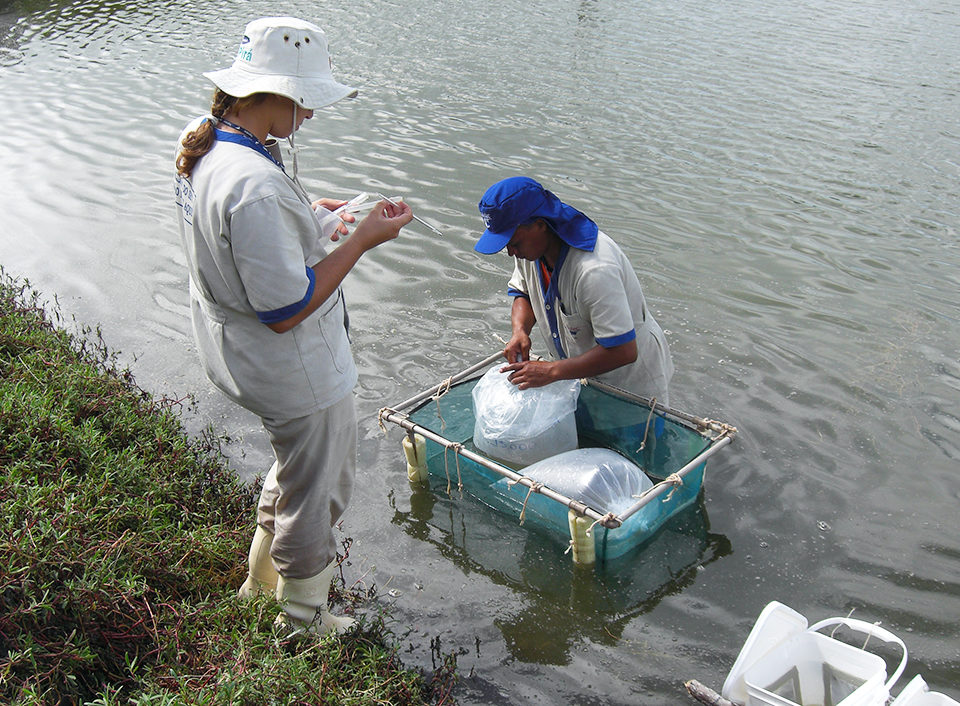
Hybrid superiority
Indicating the superiority of the hybrid cross over the average of the two parents, heterosis values for SPKY40 were 9.1 percent for harvest weight, 11.0 percent for weekly growth, 28.8 percent for growout survival, 40.4 percent for harvest biomass yield and 17.1 percent for low-oxygen mortality. In the same order, values for SPKY30 were 6.3 percent, 3.1 percent, 7.9 percent, 14.3 percent and -17.9 percent. The considerable heterosis values for SPKY40, especially for survival and harvest yield, warrant further work on a hybrid cross.
The results obtained in the third set of tests confirmed those from the second tests. More importantly, the commercial farm trials run throughout 2008 also showed the superiority of SPKY40 over its commercial parent, the Speed Line, with a higher harvest biomass of around 700 kg/ha.
(Editor’s Note: This article was originally published in the May/June 2009 print edition of the Global Aquaculture Advocate.)
Now that you've reached the end of the article ...
… please consider supporting GSA’s mission to advance responsible seafood practices through education, advocacy and third-party assurances. The Advocate aims to document the evolution of responsible seafood practices and share the expansive knowledge of our vast network of contributors.
By becoming a Global Seafood Alliance member, you’re ensuring that all of the pre-competitive work we do through member benefits, resources and events can continue. Individual membership costs just $50 a year.
Not a GSA member? Join us.
Authors
-
Joao L. Rocha, Ph.D.
Genearch Aquacultura and Aquatec
Barra do Cunhaú, Rio Grande do Norte
CEP 59190, Brazil[114,98,46,109,111,99,46,104,99,114,97,101,110,101,103,64,97,104,99,111,114,110,104,111,106]
-
Ana Carolina Guerrelhas, B.S.
Genearch Aquacultura and Aquatec
Barra do Cunhaú, Rio Grande do Norte
CEP 59190, Brazil -
Ana Karina Teixeira, B.S.
Genearch Aquacultura and Aquatec
Barra do Cunhaú, Rio Grande do Norte
CEP 59190, Brazil -
Flávio Augusto Farias, B.S.
Genearch Aquacultura and Aquatec
Barra do Cunhaú, Rio Grande do Norte
CEP 59190, Brazil -
Ana Paula Teixeira, B.S.
Genearch Aquacultura and Aquatec
Barra do Cunhaú, Rio Grande do Norte
CEP 59190, Brazil
Tagged With
Related Posts
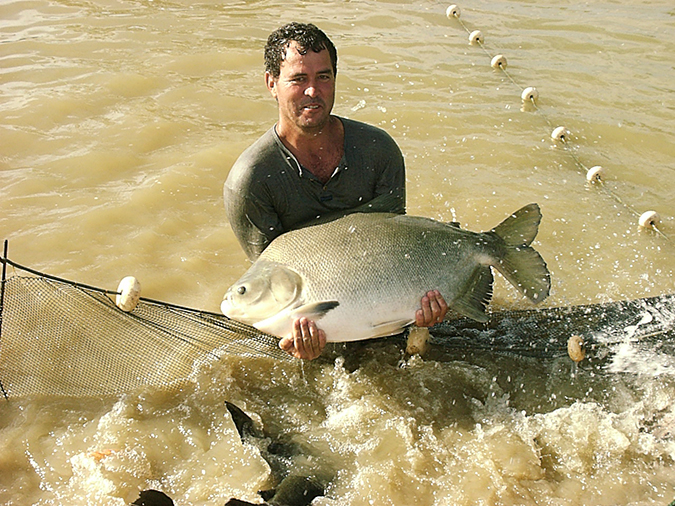
Intelligence
Brazilian aquaculture: Constraints and challenges (Part 1)
The Brazilian aquaculture industry has been growing steadily during the last two decades. Despite facing a number of challenges it is looking at continued growth and a larger role in the export markets.
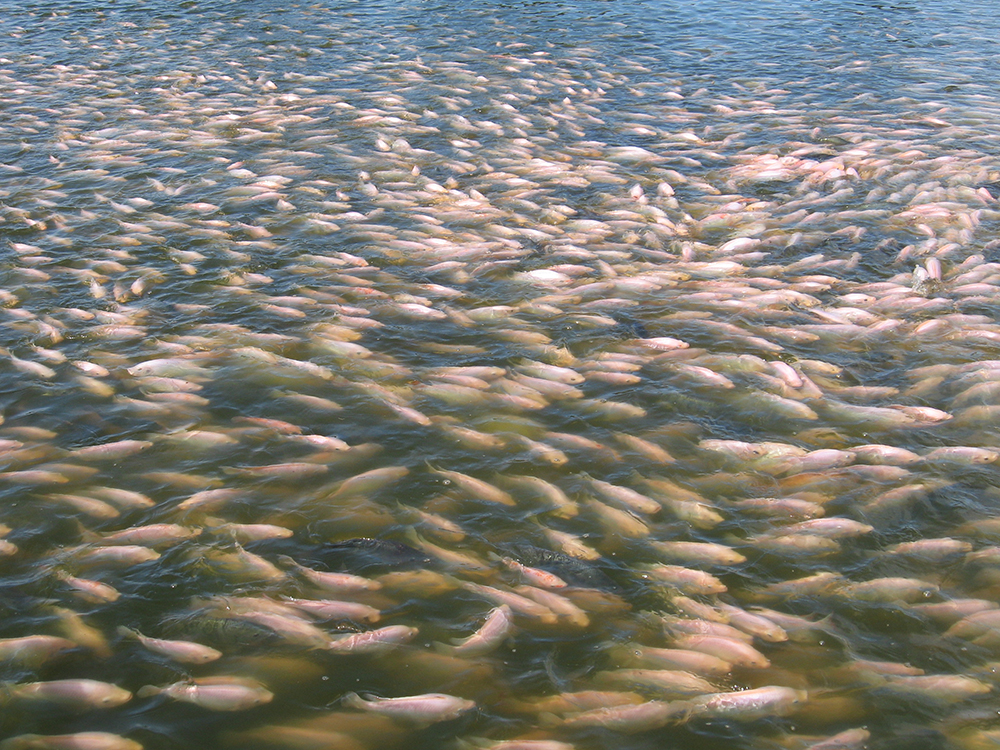
Intelligence
Considerations for tilapia farming in saltwater environments
Tilapias are farmed in a variety of production systems, but mostly in freshwater and low-salinity waters. But tilapias are an excellent candidate for aquaculture in brackish- and seawater because they can tolerate a wide range of water salinity.
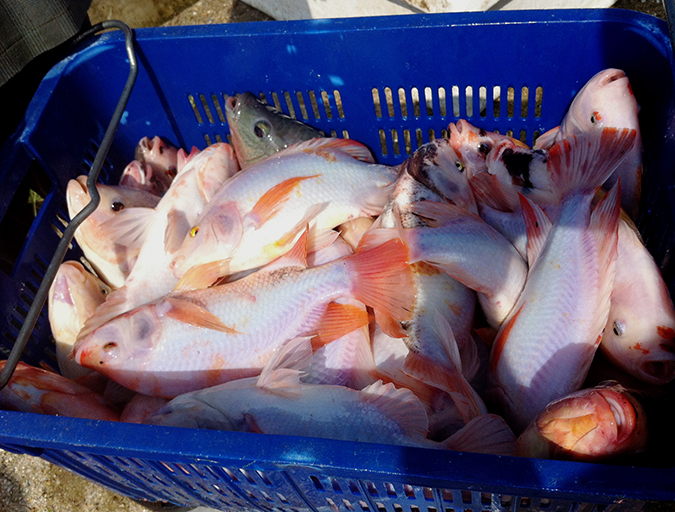
Health & Welfare
Testing dietary potassium diformate in tilapia feed
A study conducted in Huila, Colombia, tested the effects of the feed additive potassium diformate on the performance of juvenile tilapia. Results showed an enhanced fish productivity index, lower mortality and improvements in weight gain.
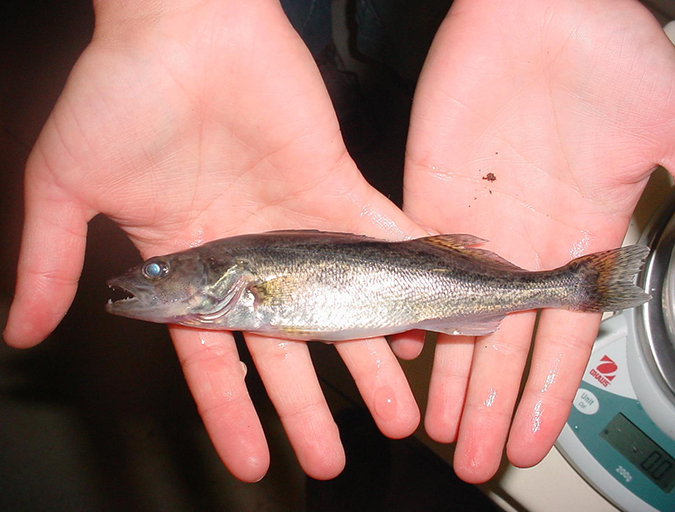
Intelligence
Walleye and saugeye growing successfully indoors
Past and ongoing studies at the UWSP Northern Aquaculture Demonstration Facility (UWSP-NADF) have shown that walleye and hybrid walleye can be successfully raised indoors using early advanced spawning, incubation and rearing techniques. Marketing studies indicate good aquaculture potential and high demand.


